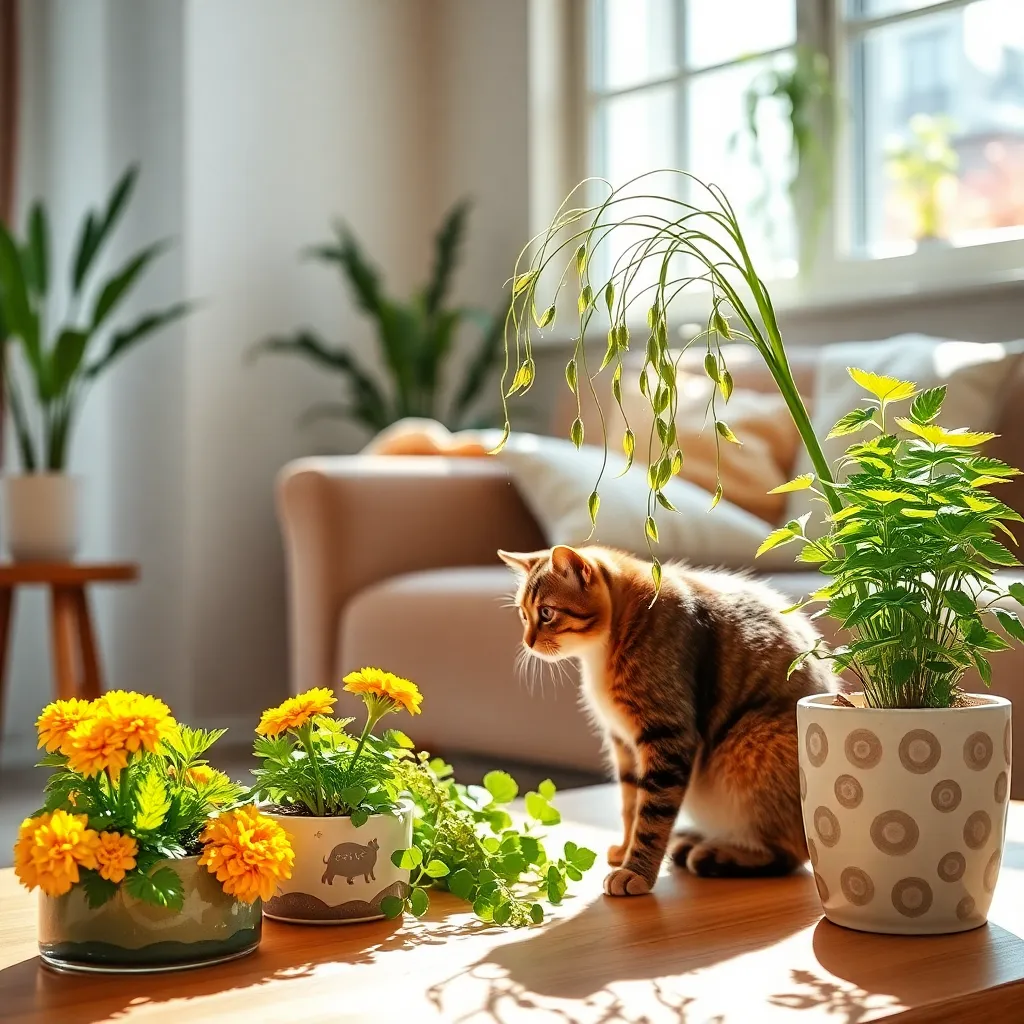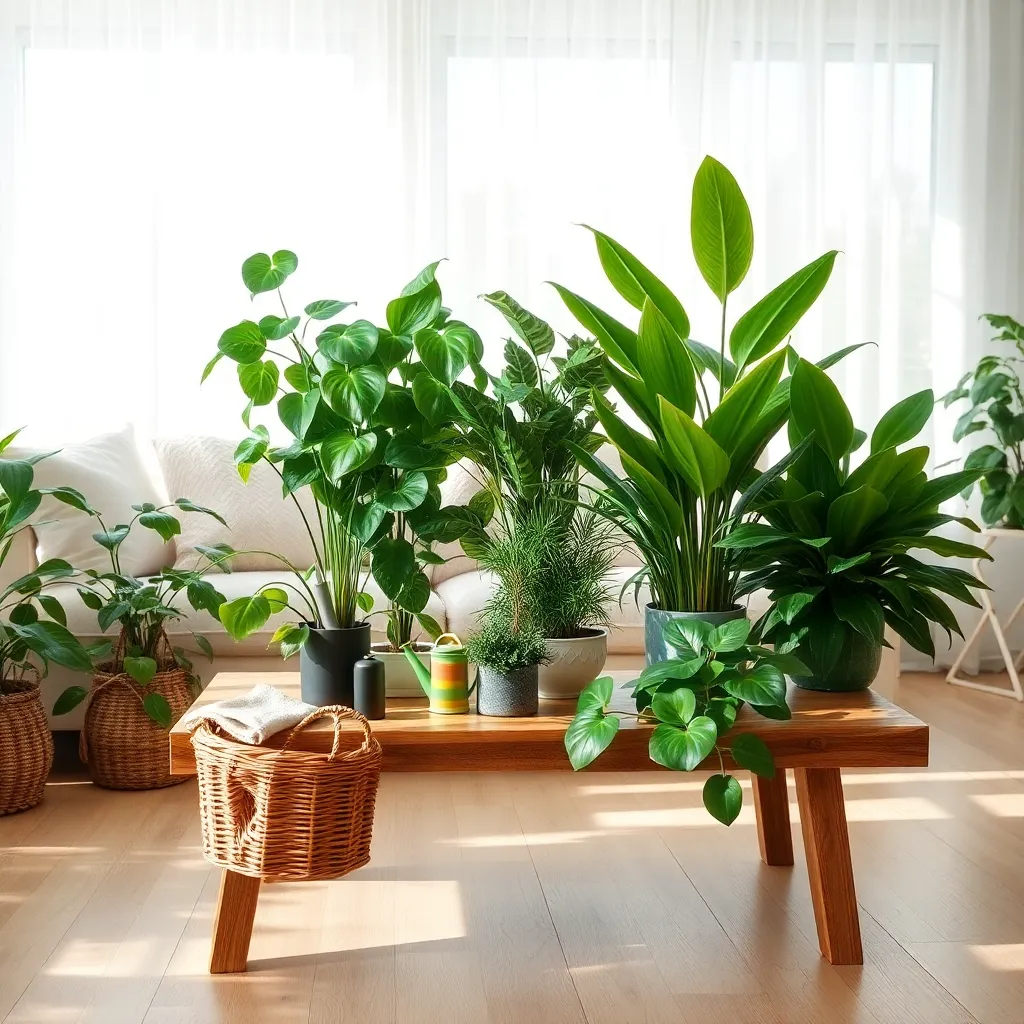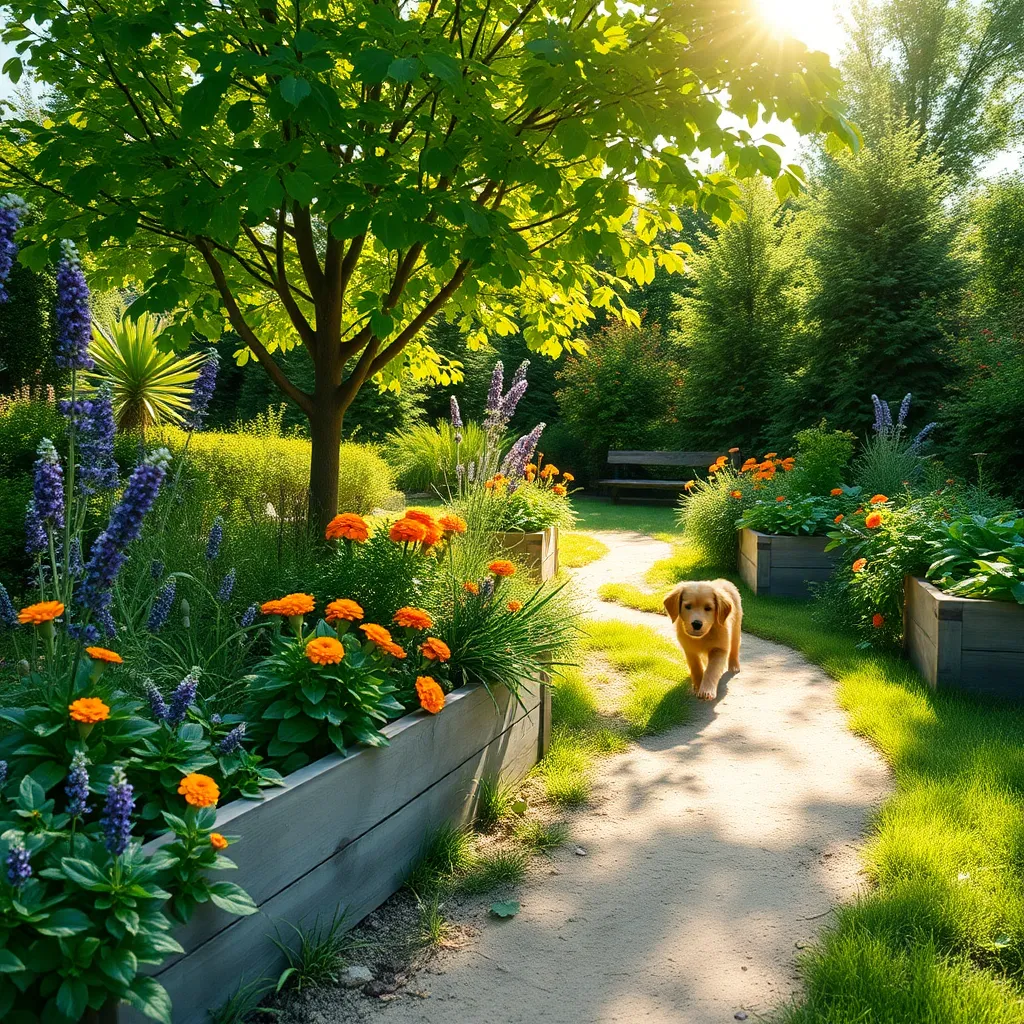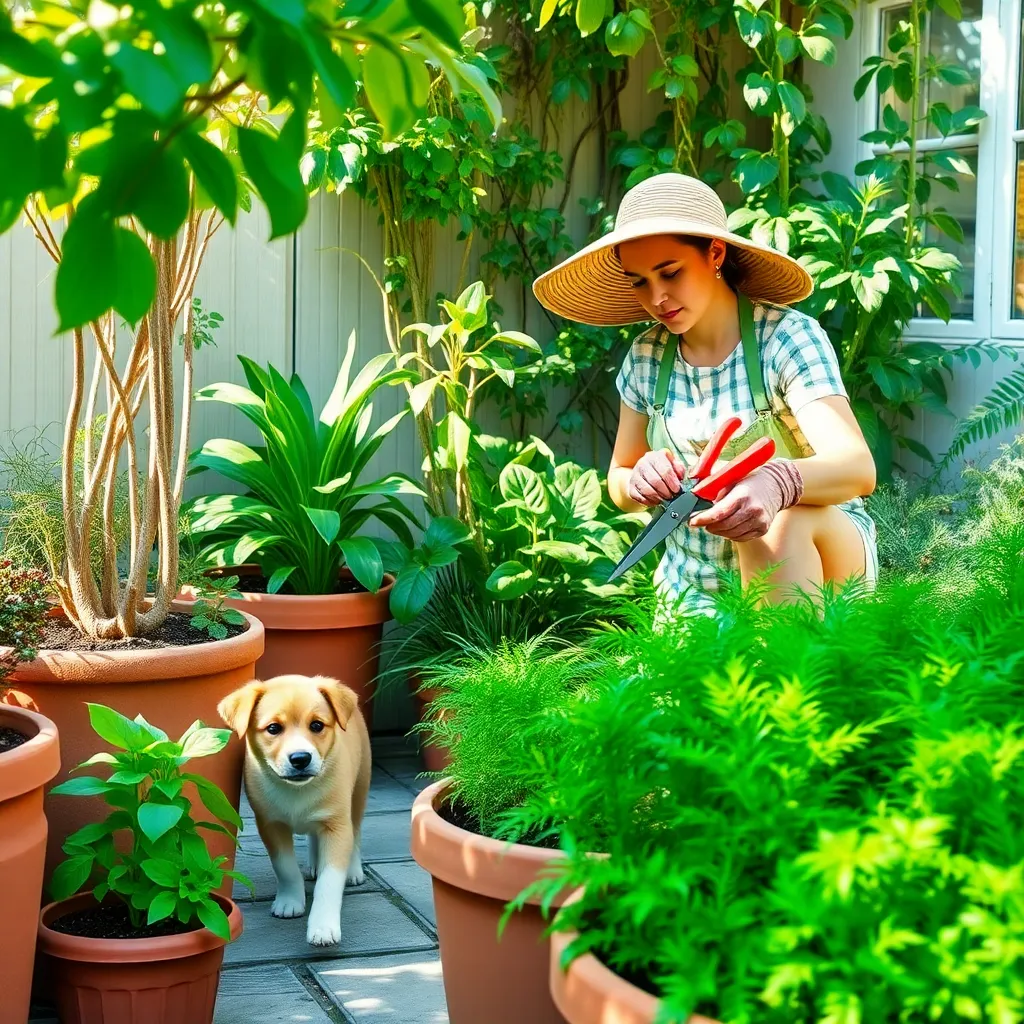Welcoming plants into your home is like inviting new friends into your life—they bring beauty, joy, and a sense of tranquility. Yet, for those of us with furry companions, it’s crucial to choose greenery that keeps our pets safe while still enhancing our living spaces. Whether you’re a novice gardener just starting to cultivate your green thumb or a seasoned plant enthusiast seeking to expand your collection, you’ll find that creating a pet-friendly environment is both rewarding and essential.
Our beloved pets are curious explorers, often turning our homes into their playgrounds. As such, understanding which plants can coexist safely with pets is key to maintaining a harmonious household. In this article, you’ll discover a variety of plant species that are not only non-toxic to your four-legged friends but also easy to care for and aesthetically pleasing. From lush ferns to vibrant blooms, we’ll guide you through options that ensure a safe and serene habitat for everyone in your home.
By the end of this read, you’ll be equipped with the knowledge to confidently select, care for, and display pet-friendly plants that enhance your living space without compromising your pet’s health. We’ll share practical tips on plant placement and maintenance, helping you strike the perfect balance between style and safety. Let this journey inspire you to transform your home into a sanctuary where both plants and pets thrive together, in perfect harmony.
Understanding Pet-Safe Plant Benefits

Choosing pet-safe plants for your garden not only protects your furry friends but also offers a range of benefits to your home environment. These plants are non-toxic, ensuring that curious pets exploring your garden won’t suffer from harmful effects if they take a nibble.
Incorporating pet-safe plants can enhance the aesthetic appeal of your space while providing a safe haven for your pets. Consider plants like spider plants and Boston ferns, which are not only safe for pets but also excellent for improving air quality indoors.
For optimal growth, ensure your pet-safe plants have the right conditions, such as well-draining soil and appropriate sunlight. Spider plants, for instance, thrive in indirect sunlight and require watering only when the top inch of soil feels dry.
Advanced gardeners can experiment with creating a pet-friendly garden by layering plants of different heights and textures to create a visually appealing landscape. Use a mix of perennials and annuals to provide year-round interest and sustenance for your garden’s ecosystem.
Top Non-Toxic Plants for Indoors

Bringing indoor plants into your home doesn’t have to be risky for your pets. Selecting non-toxic plants ensures that your furry friends stay safe while you enjoy the benefits of greenery. Consider adding plants like spider plants, which are not only safe for pets but also excellent for purifying the air in your home. They thrive in bright, indirect sunlight and can tolerate occasional overwatering, making them a low-maintenance choice for beginners.
Another great option is the Boston fern, known for its lush foliage and air-purifying qualities. To keep this plant healthy, provide it with moderate to bright indirect light and maintain consistent moisture in the soil. For a more advanced care tip, mist the leaves regularly to increase humidity, as ferns prefer a slightly humid environment. Using a well-draining potting mix is crucial to prevent root rot, especially in humid conditions.
If you’re looking for a plant with a bit more color, the African violet is an excellent choice. These charming plants are safe for pets and thrive in warm, indoor environments with filtered light. To encourage blooming, use a balanced, water-soluble fertilizer every couple of weeks during the growing season. Ensure the soil remains moist but not waterlogged, and consider using a pot with bottom-watering capabilities to protect the delicate leaves from water spots.
Additionally, the parlor palm is perfect for those seeking a larger indoor plant that’s still pet-friendly. This elegant plant can adapt to low-light conditions and requires infrequent watering, making it ideal for busy plant owners. For optimal growth, place it in a well-lit room and water it thoroughly, allowing the top inch of soil to dry out between waterings. Providing a balanced fertilizer every few months can help maintain its lush, green appearance.
Outdoor Pet-Friendly Garden Choices

Creating an outdoor pet-friendly garden begins with choosing plants that are safe for your furry friends. Lavender is an excellent choice, providing not only a pleasing aroma but also being non-toxic to both dogs and cats. Plant lavender in well-draining soil and a sunny spot for best results, ensuring it receives at least six hours of sunlight daily.
Another great option is the snapdragon, which offers vibrant colors without posing any risk to pets. These plants thrive in full sun and prefer slightly moist, well-drained soil. Water snapdragons deeply but infrequently, allowing the soil to dry out between waterings to prevent root rot.
For those looking to add greenery, the spider plant is a perfect pet-friendly addition to your garden. Although typically grown indoors, it can thrive outside in shaded areas with indirect sunlight. Keep the soil consistently moist but not waterlogged, and consider bringing spider plants indoors during colder months to protect them from frost.
Pet owners can also consider the bachelor’s button, known for its bright blue flowers and hardiness. This plant does well in poor to average soil and requires minimal watering once established, making it a low-maintenance choice. Deadhead spent flowers to encourage continuous blooming and to keep the plant looking tidy.
Safety Tips for Plant Care

For a pet-friendly garden, it’s crucial to ensure that your plants do not pose any hazards. Regularly inspect your plants for any signs of damage or disease, as unhealthy plants may shed toxic parts more readily. This not only keeps your plants healthy but also reduces the risk of your pets ingesting harmful materials.
Always research the specific needs of your chosen plants to ensure they thrive. For instance, understanding the ideal soil type and sunlight requirements can prevent stress in plants, which may lead to the production of harmful compounds. Consistent care helps maintain a safe environment for your pets and a thriving garden.
When watering plants, ensure you’re providing the correct amount to avoid overwatering, which can lead to root rot. Most pet-friendly plants prefer well-draining soil, so consider using a mix that includes sand or perlite to improve drainage. This not only helps the plants but also minimizes the risk of mold, which can be harmful to pets.
Mulching is a great way to retain soil moisture and suppress weeds, but be cautious about the type of mulch you use. Opt for pet-safe mulching materials like shredded leaves or untreated wood chips to avoid any toxic substances. This simple step ensures that your garden remains a safe space for your furry friends to explore.
Creating a Harmonious Pet-Plant Space

Crafting a space where pets and plants coexist harmoniously involves thoughtful planning of both plant choices and their placement. Begin by selecting pet-friendly plants such as spider plants, Boston ferns, and African violets, which are generally non-toxic to most animals.
These plants thrive in a variety of conditions, making them versatile additions to your home. Spider plants, for example, prefer indirect sunlight and require watering once a week, allowing their soil to dry out slightly between waterings.
To further ensure safety, consider elevating plants or using hanging baskets to keep them out of reach from curious pets. This not only protects the plants but also adds vertical interest to your indoor garden, maximizing space efficiently.
For those with more experience, experimenting with self-watering planters can be a game-changer. These planters maintain consistent moisture levels, reducing the risk of overwatering and making plant care more manageable.
Moreover, incorporating natural deterrents such as citrus peels or diluted vinegar around the base of the pots can gently discourage pets from nibbling on leaves. Such measures ensure that both plants and pets can thrive in a shared environment, creating a serene and safe home.
Conclusion: Growing Success with These Plants
In navigating the verdant world of pet-friendly plants, we’ve delved into five essential concepts to harmonize your home and nurture your relationships. Firstly, we explored the importance of thoughtful communication, emphasizing how discussing plant choices can strengthen understanding between partners. Secondly, we highlighted the role of compromise, choosing greenery that respects both your aesthetic desires and your pet’s safety. Thirdly, we examined the value of shared responsibility, fostering teamwork in plant care. Fourthly, we celebrated the joy of creating a welcoming space that reflects mutual love and safety. Lastly, we underscored the significance of ongoing learning, as plant care evolves with your relationship.
As your actionable next step, choose one plant from our list and start your journey toward a pet-friendly, love-filled home. Remember, nurturing both your plants and relationships requires patience and attention.
Bookmark this article to revisit these concepts and deepen your understanding as your needs evolve. By integrating these principles, you’re not just creating a safe home but laying the groundwork for thriving relationships. Here’s to flourishing bonds and blooming love—today and always.

